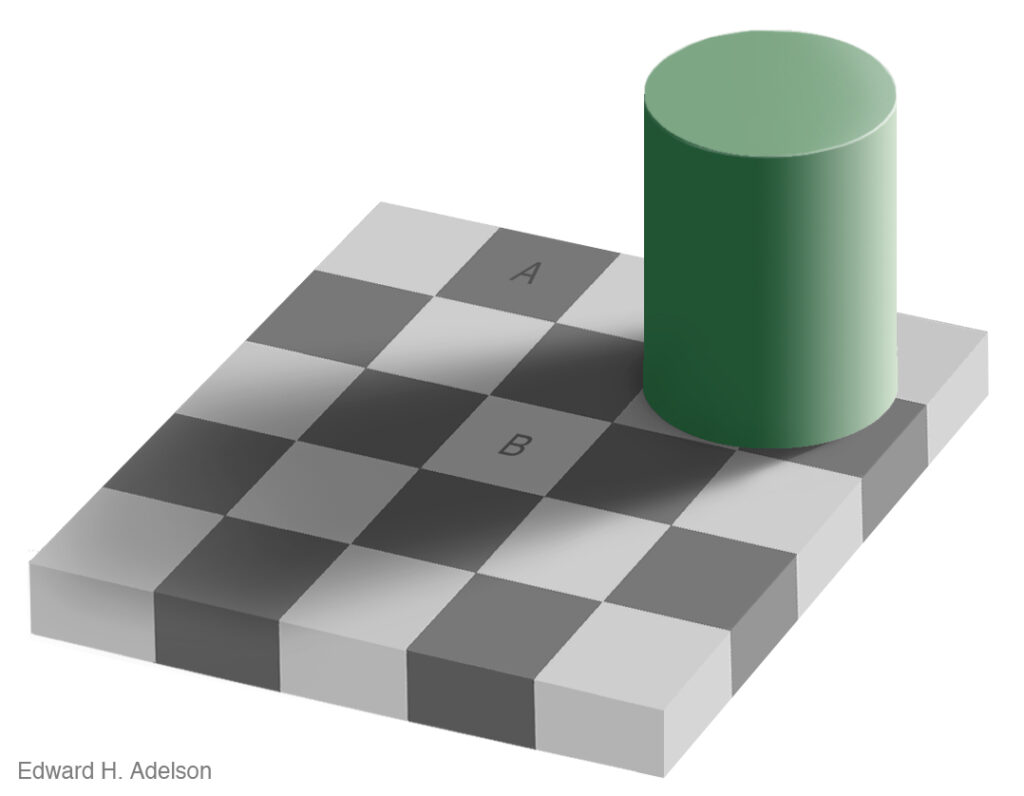
Are You Okay Being Right?
Trust me, I know these things…
| As a leader, it’s important to be right. A leader’s credibility and influence are based, in part, on his or her ability to be right about matters relevant to their role, function, and organization. But how right does a leader need to be? Here’s an image you will not see “right” or correctly. To reiterate, if you’re alive and breathing while reading this, you will be wrong. Squares A and B are the same shade of gray. |
| I know, you think I’ve made a typo or I’ve lost my mind, because it’s patently obvious they’re not the same shade. It’s self-evident. Even I don’t see them as the same shade, and I’m writing this. But, alas, they are. To prove it, have a look at this: |

| If you still don’t believe that, print this 60-Second Read, take some scissors, cut out squares A & B, and them compare them. I recently brought out the illusion over coffee at the end of dinner, and of course heard, “No way. Impossible. Can’t be.” So I then brought out the scissors, and in a few minutes, it was “Wow. Unreal. They are. Can be.” If you’re human, you will see square A darker than square B. But it’s not. Not to be overly dramatic, but you’re condemned to being wrong. You can’t help it, and you can’t prevent it. Here’s one more: |
| Created by Roger Shepard, the above two tabletops are not only the same length, but also the same shape. I know: “No way. Impossible. Can’t be.” But you already know the answer. Here’s a great website with robust and interactive proof. Once on the website, click and drag the tabletop on the left table to the one on the right. I’ll wait here while you check it out. So Shepard Tables are example 2 of how we get it wrong, and there’s nothing we can do about it. In fact, it’s because we’re human that we get these wrong. Our very being, our humanity, ensures we won’t see it correctly, that we will fail when we think we’re right (and we won’t even know it). Worse still, we’ll argue we’re 100% certain we’re right. As a leader, one is supposed to be right. Ideally, one is supposed to be frequently right. But that can be a high bar to surpass. How right do we need to be? How often do we need to be right? Any room for error? For fallibility? Can I accept that I will eventually be wrong because I don’t, or even, I can’t see things as they are? So if you’re just the slightest bit Type A (and how many leaders and managers aren’t?), here’s to being fallible. For 2020, I wish you the strength to permit yourself to be wrong, and to continue to still feel you’re okay. I know, easier said than done, but still a noble goal. And equally important, I wish you and your loved ones much health and happiness for the holidays and the New Year. |
Sign up for our 60-Second ReadTM
Categories
- board of directors
- career
- career development
- change
- coaching
- communication
- compensation
- conflict
- consulting
- critical thinking
- culture
- decision-making
- education
- experiential learning
- feedback
- high potential
- hr
- immigration
- influence
- innovation
- jobs
- knowledge economy
- leadership
- leadership development
- leadership style
- learning
- management
- management development
- motivation
- selection
- self-actualization
- skills shortage
- succession planning
- talent development
- talent management
- time management
- uncategorized


